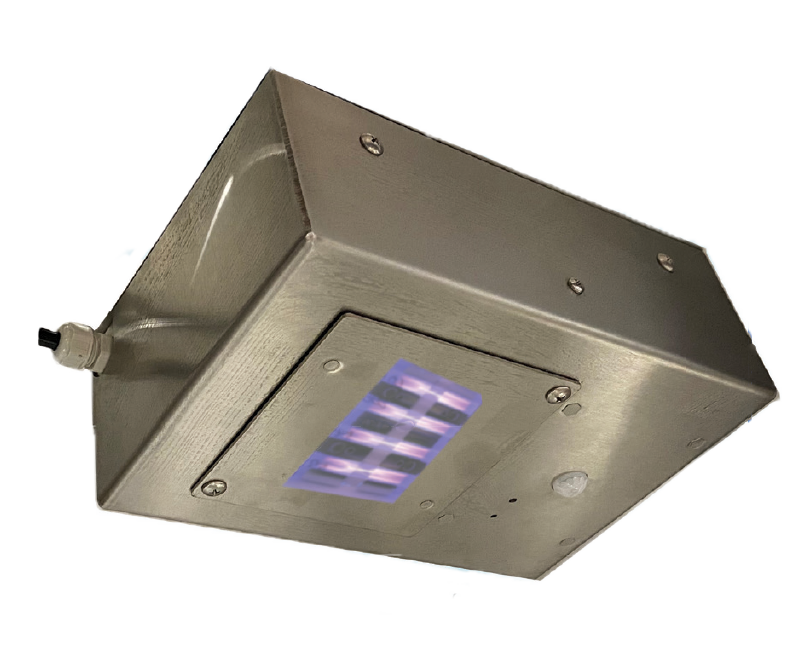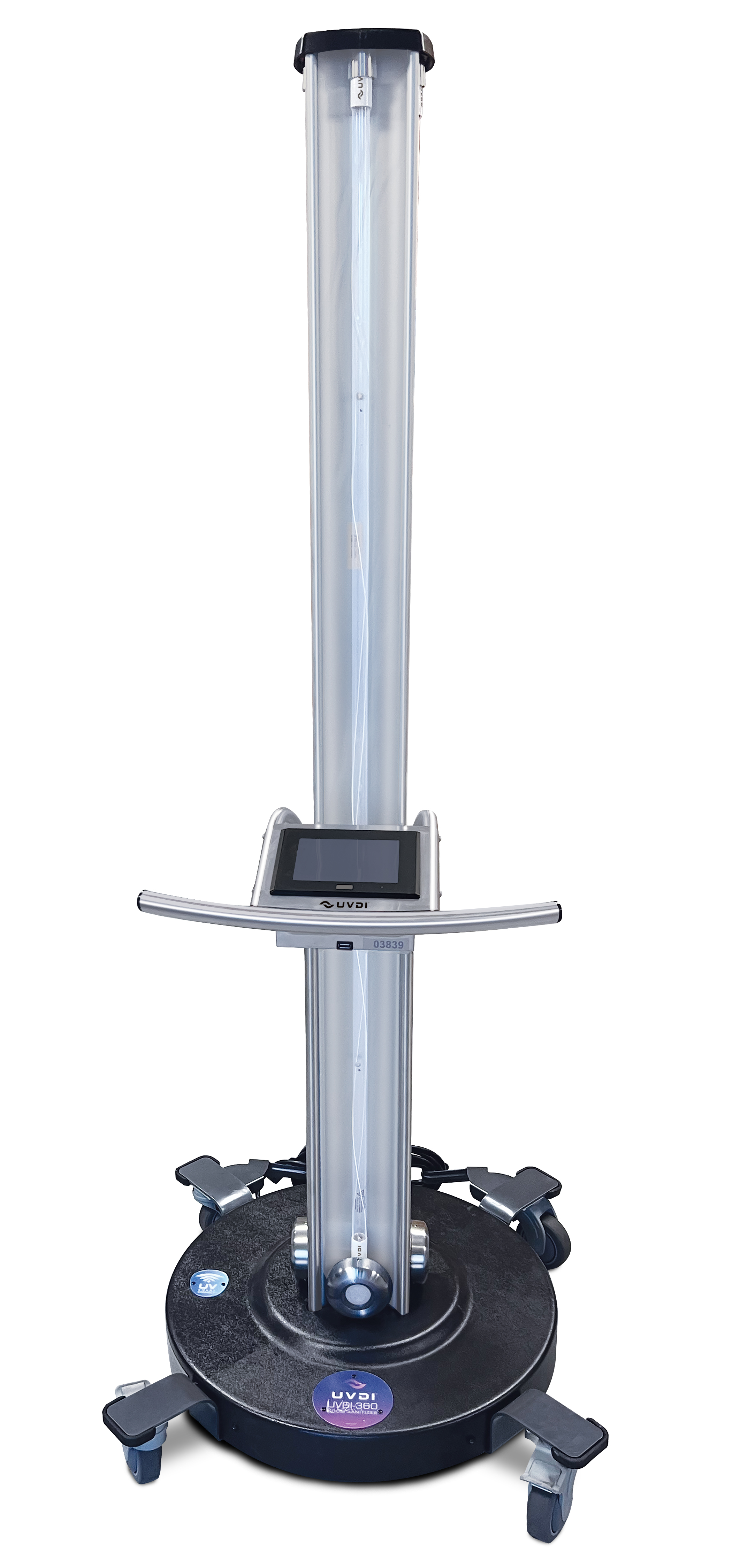Using the Power of UV Surface Disinfection: A Comprehensive Guide for Healthier Spaces
Using the Power of UV Surface Disinfection: A Comprehensive Guide for Healthier Spaces
Blog Article
UV Sanitation: The Cutting-Edge Innovation Changing Hygiene Practices
In the realm of hygiene practices, one innovation has arised as a game-changer: UV disinfection. From health care settings to food processing, UV disinfection is making its mark in various markets.
How UV Disinfection Functions
UV sanitation functions by using ultraviolet light to damage or inactivate microbes, supplying a highly efficient and chemical-free approach of cleanliness. This innovation takes advantage of the power of short-wavelength UV-C light, which is qualified of harming the DNA and RNA of microbes, therefore rendering them incapable to replicate and cause injury.
The procedure starts with the setup of UV sanitation systems, which contain UV lights that discharge UV-C light. These lights are tactically put in locations where microbial contamination is an issue, such as water therapy plants, health centers, research laboratories, and food handling facilities.
When microorganisms are revealed to UV-C light, the photons penetrate their cell wall surfaces and reach the DNA and RNA inside. The high-energy UV-C photons interrupt the genetic material by producing bonds between nearby nucleotides, causing the development of thymine dimers. These dimers protect against the microbes from reproducing, providing them harmless.
UV disinfection is very effective versus a large range of bacteria, consisting of infections, microorganisms, and bloodsuckers. It is specifically reliable against waterborne microorganisms like E. coli, Giardia, and Cryptosporidium. UV sanitation is a chemical-free technique, eliminating the need for potentially harmful anti-bacterials and lowering the threat of unsafe sanitation spin-offs.
Advantages of UV Sanitation
UV sanitation provides numerous benefits in the area of sanitation, making it a very chosen approach for effectively removing dangerous bacteria. Unlike typical sanitation techniques that count on chemicals, UV disinfection utilizes ultraviolet light to destroy the DNA of microbes, rendering them not able to duplicate and create infections.

UV sanitation is also extremely functional in its applications. It can be made use of in numerous settings, including healthcare facilities, colleges, food handling facilities, and water therapy plants. UV disinfection systems can be easily integrated into existing sanitation practices, offering an added layer of protection versus transmittable illness.
In enhancement to its effectiveness and convenience, UV disinfection is also eco-friendly. It does not generate any unsafe results or deposits, making it a secure and lasting technique for hygiene - uv surface disinfection. In addition, UV sanitation needs minimal maintenance and has a long lifespan, causing price savings in the long run.
UV Disinfection in Medical Care Settings
In health care setups, UV disinfection has actually arised as a revolutionary method for successfully eliminating hazardous microbes. UV sanitation functions by releasing ultraviolet light at a particular wavelength that is dangerous to bacteria, infections, and other microbes.
Firstly, UV disinfection is a non-chemical technique, making it an eco-friendly option compared to standard disinfection methods that usually involve using harsh chemicals. The use of UV light gets rid of the requirement for chemical anti-bacterials, decreasing the danger of dangerous deposit or chemical exposure to both people and medical care employees.
Furthermore, UV sanitation is very efficient in killing a wide range of microorganisms, including drug-resistant bacteria such as MRSA and C. difficile. It offers a consistent and dependable sanitation procedure, ensuring that all surface areas and devices are completely sanitized, even in hard-to-reach locations.
UV Sanitation in Food Processing
The application of UV sanitation expands beyond health care settings and discovers considerable worth in the world of food handling. uv surface disinfection. UV disinfection modern technology is becoming increasingly preferred in the food industry as a result of its capability to properly get rid of hazardous virus and improve food safety and security
One of the primary advantages of UV disinfection in food processing is its capability link to target a variety of bacteria, consisting of mold and mildews, germs, and infections. By utilizing UV light at details wavelengths, it is possible to interrupt the DNA and RNA of these virus, rendering them unable to trigger or replicate harm. This technology can be applied to different stages of the food processing chain, consisting of surface area disinfection, tools sterilization, and water treatment.
UV disinfection offers a non-thermal and chemical-free approach of disinfecting foodstuff. Unlike typical disinfection approaches that count on chemicals or warm, UV innovation does not leave any type of residue or modify the taste, texture, or dietary worth of the food. This makes it an excellent service for sectors that require strict adherence to quality criteria.
Moreover, UV disinfection systems are very easy to operate and set up, requiring very little upkeep. They can be incorporated into existing handling lines without causing substantial interruptions to the production process. Furthermore, UV systems have a fast therapy time, permitting continual processing and lowering downtime.
The Future of UV Sanitation

One area where UV sanitation is anticipated to make considerable innovations is in the field of healthcare. With the rise of antibiotic-resistant germs and the demand for extra reliable sanitation approaches, UV light has the possible to play an important function in reducing healthcare-associated infections. UV disinfection systems can be made use of to sanitize surface areas, devices, and even the air in health care his explanation facilities, helping to avoid the spread of damaging microorganisms and improve individual security.
One more industry that can benefit from advancements in UV sanitation innovation is the food market. UV light has already proven to be an effective approach for sanitizing foodstuff and reducing the threat of foodborne ailments. As innovation enhances, we can expect to see extra economical and effective UV sanitation systems being executed in food handling plants, making certain that the food we eat is risk-free and without hazardous microorganisms.
Final Thought
Finally, UV sanitation is an advanced technology that is changing cleanliness techniques in medical care settings and food handling. By utilizing UV light to eliminate or shut down microbes, it offers countless benefits such as safety, performance, and effectiveness. With recurring developments in this area, UV sanitation holds wonderful prospective for the future of cleanliness, giving a sustainable and trusted service for preserving clean and sanitary environments.
UV disinfection is a chemical-free technique, getting rid of the demand for potentially damaging anti-bacterials and reducing the threat of hazardous disinfection spin-offs.
Unlike traditional sanitation techniques that depend on chemicals, UV sanitation makes use of ultraviolet light to ruin the DNA of microbes, rendering them unable to replicate and trigger infections. Unlike typical disinfection techniques that depend on chemicals or warmth, UV technology does not leave any type of deposit or alter the preference, structure, or nutritional worth of the food. As innovation improves, we can expect to see a lot more affordable and efficient UV sanitation systems being executed in food processing plants, ensuring that the food we take in is risk-free and totally free from unsafe microorganisms.
In verdict, UV that site disinfection is an advanced innovation that is transforming hygiene methods in medical care settings and food processing.
Report this page